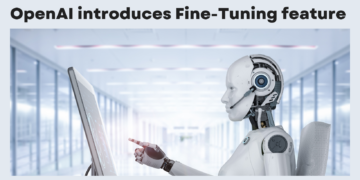Navigating the complexities of the world requires our brain to cultivate an intuitive understanding of the physical environment. This cognitive prowess enables us to decipher sensory inputs, anticipate future events, and strategize our actions accordingly. While the precise mechanisms underlying this cerebral feat remain elusive, a burgeoning area of research hints at the intriguing possibility that the brain might employ a process akin to “self-supervised learning.”
Self-Supervised Learning Study 1: Mental Simulation
A groundbreaking study spearheaded by Aran Nayebi at MIT delved into the realm of “mental simulation.” The team trained a self-supervised model to predict the future state of its environment using videos capturing everyday scenarios. The litmus test for the model’s cognitive prowess was the “Mental-Pong” task, a variant of the classic video game with a hidden ball.
Remarkably, the self-supervised model exhibited a level of accuracy in tracking the hidden ball’s trajectory comparable to neurons in the mammalian brain. Equally captivating was the resemblance between the neural activation patterns within the model and those observed in the brains of animals playing the game. This implies that the model had effectively embraced the cognitive function of mental simulation, crucial for nuanced aspects of cognition such as planning and decision-making.
Self-Supervised Learning Study 2: Grid Cells and Path Integration
Simultaneously, under the guidance of Mikail Khona and Rylan Schaeffer at MIT, the research pivoted towards “path integration” — the skill of spatial orientation derived from past movements. Demonstrating its adaptability, the self-supervised model, trained on sequences of velocity inputs, proficiently distinguished positions based on their similarity or dissimilarity. This fascinating observation draws parallels to the representation of space by grid cells in the brain.
Grid cells, nestled in the entorhinal cortex, play a pivotal role in animal navigation by firing at specific spatial locations. The self-supervised model’s adeptness at generating grid-like activation patterns suggests a parallel strategy in representing space. This alignment further strengthens the case for self-supervised learning as a fundamental principle in the brain’s learning mechanisms.
Implications for the Brain and AI
The two studies serve as compelling evidence that self-supervised learning might be an intrinsic facet of the brain’s learning processes. What sets self-supervised learning apart are its advantages over traditional supervised methods. The elimination of the need for labeled data, increased robustness to noise, and the capacity to learn intricate representations of the world make it a promising avenue for AI development mirroring the brain’s learning intricacies.
Furthermore, the ramifications of these findings transcend the realm of AI progress. The principles of self-supervised learning harbor the potential to pave the way for innovative strategies in addressing learning disorders, thereby unlocking avenues for more efficacious interventions.
Comparison to Human Brain Self-Supervised Learning Mechanisms
The parallels between how the human brain learns and how self-supervised models operate are striking. Both engage in exploration, be it through sensory experiences or data, to glean insights from their surroundings. The common thread lies in the pursuit of identifying patterns and relationships — the brain achieves this through neural connections, while self-supervised models accomplish it through weight updates.
Moreover, the lifelong learning aspect is shared by both the brain and self-supervised models. The perpetual update of knowledge and understanding based on new experiences showcases the dynamic nature of learning in both realms.
Conclusion
While the exploration of self-supervised learning in the context of the brain is in its nascent stages, the potential it holds is revolutionary. This paradigm can reshape our comprehension of the brain’s learning mechanisms and, in turn, guide the development of AI systems that emulate this intricate dance of cognition.
As we unravel the principles of self-supervised learning, the prospect of developing treatments for learning disorders and creating AI systems with a more human-like learning approach becomes increasingly tangible. The journey into this new frontier promises not just technological advancements but a deeper understanding of the very essence of cognition.



























